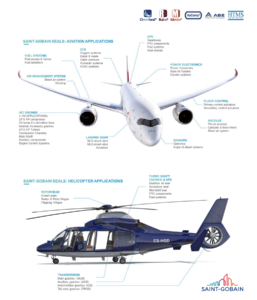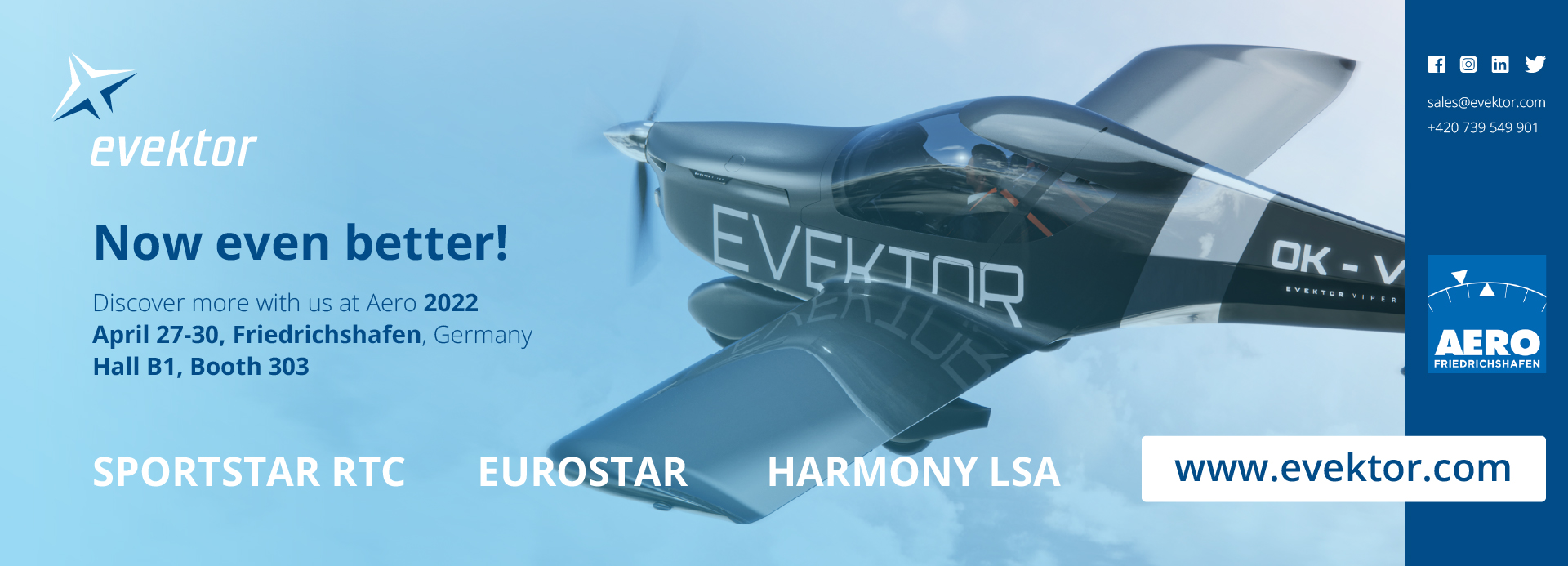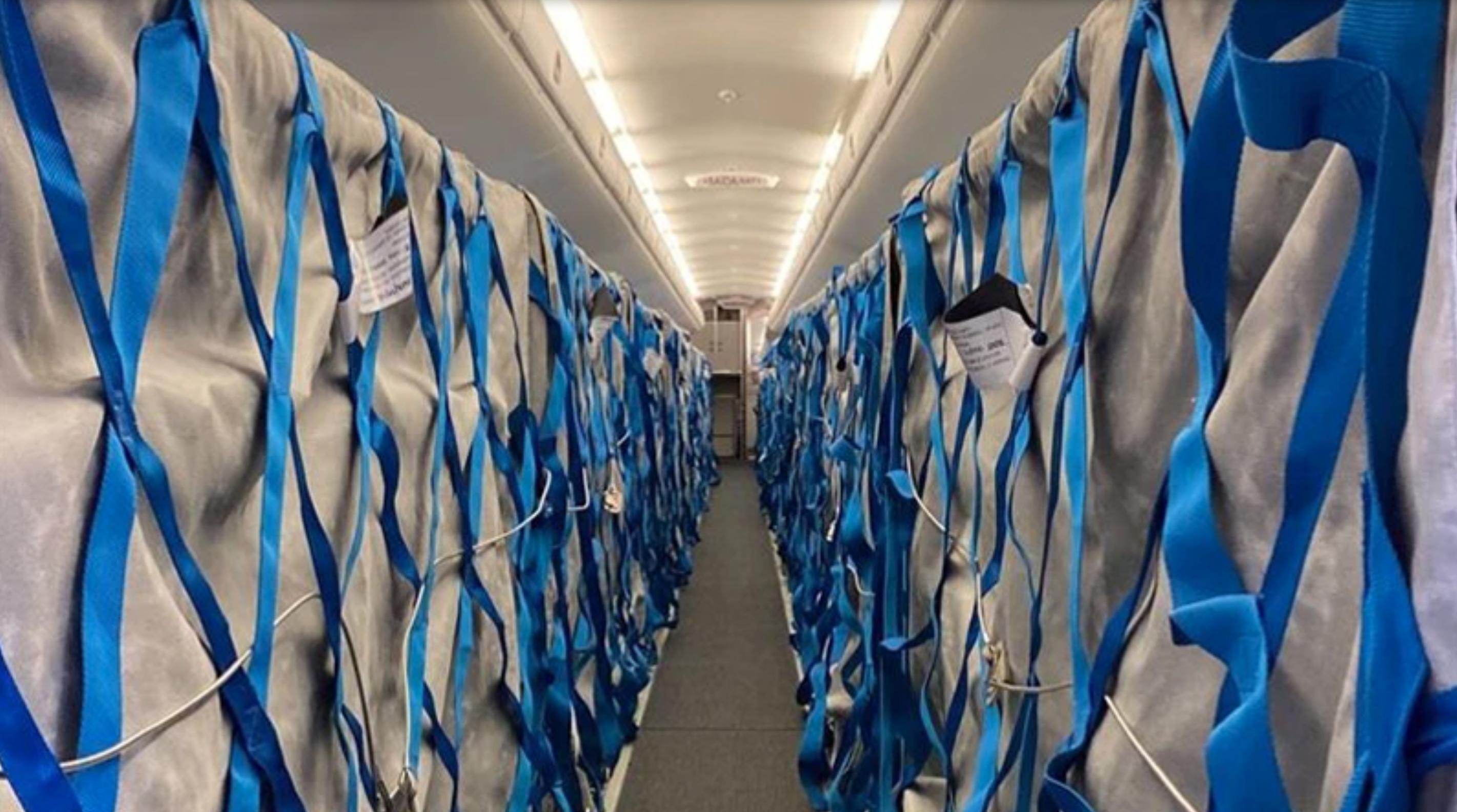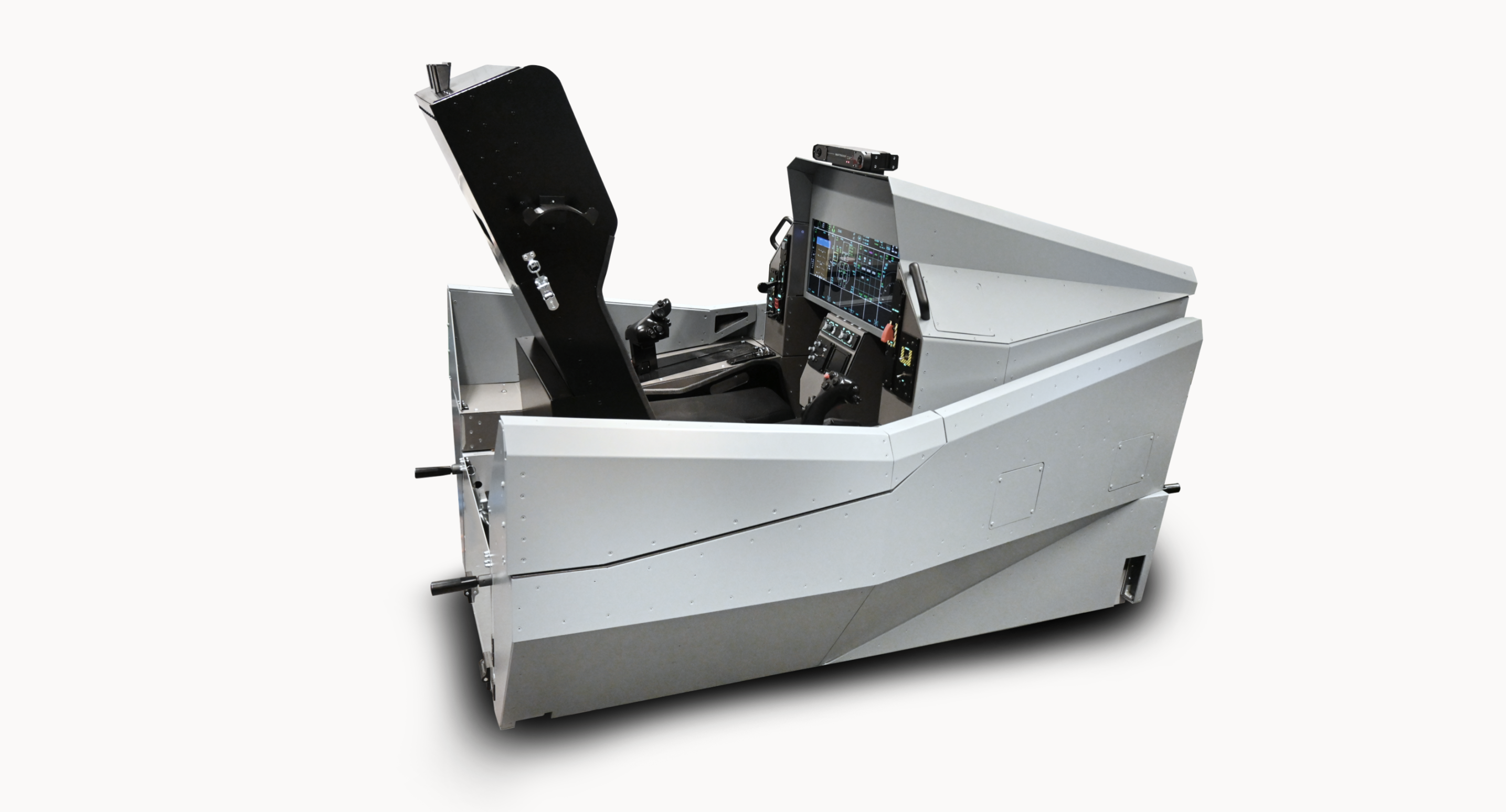Aircraft equipment is made up of thousands of components – many are invisible but most assuredly critical. Saint-Gobain Seals, a global design engineer and manufacturing business, falls into this area in the form of seals and wear parts. The business has been making an impact on the aviation industry for more than 60 years by supplying critical parts used in commercial and military aircraft.
Their parent company, Saint-Gobain Group, has been in existence for over 350 years and is mainly known for sustainable construction solutions. In the same pioneering spirit as the Group, Saint-Gobain Seals focuses on strong material expertise, processing, and design engineering developed in accordance with aviation customers’ needs. The business also has a global footprint with a local reach; several manufacturing sites are strategically located in Europe, Americas and Asia. Their spirit of an engineer-driven company, relentlessly dedicated to providing custom design to solve a customer’s problem, is at the heart of their continued success. Current industry challenges that deal with sustainability are one reason customers seek Saint-Gobain Seals as their polymer and metal solutions do address weight reduction or improved efficiency in various subsystems.
Why Sealing & Material Solutions Matter
From wood and fabric for the first aircraft to today’s composites and polymers, materials are leading the way in transforming aviation. OEMs are challenged to reduce the weight of components to save fuel over the lifetime of the airplane. The conception of the Boeing 787 Dreamliner, comprised of 50% composites (fuselage, wings, tail, doors, and interior), made it 20% more fuel efficient than its predecessors. When it comes to seals and wear parts, this translates to changes in material construction. In a jet engine, there are thousands of seals and wear parts, which means a lighter seal or part can be of critical importance.
Not only are main commercial programs flying with Saint-Gobain Seals’ sealing and wear parts but also helicopters and military aircraft, valued for their long operational lifetime. These parts are present in every essential system of the aircraft, e.g., environmental control, engines, flight control actuators and bleed air. A high concentration of parts can be found in major areas of the engine such as compressor, turbine and combustion chamber; there are more than 60 applications in this engine area alone!
As there are many different systems in an aircraft, there are many different requirements. One could classify Saint-Gobain Seals’ solutions into two main product categories. The first includes their seals product line with polymer spring-energized seals, rotary lip seals and metal seals. They are beneficial in challenging environments such as high temperature, aggressive media, high pressure or high rotating speed. The second category is comprised of wear and friction solutions with machined fluoropolymers, processed thermoplastics or thermosets, and composites.
Their Rulon®, Meldin® and HyComp® solutions take very dissimilar forms and breadth of applications is even larger. A growing trend is to replace metallic parts with polymers or composites to reduce the weight due to the material’s lower density. Implemented extensively on the aero structure, it is now touching internal structural parts such as housings and manifolds. This switch to new materials provides additional benefits compared to metals, in particular friction and wear resistance needed where parts are in motion or submitted to vibrations such as tube clamps in an engine or bearings/bushings. Various processes of polymers enable integration of several functions in one part, allowing the production of subassemblies and combining light weight, assembly and supply chain simplification while reducing wear and friction for an improved lifetime. The ability to design parts with a very low coefficient of friction, high load resistance and high temperature resistance (up to 320°C / 608°F in regular operation) makes HyComp® composites a relevant choice for many metal replacements especially those in hot areas close to the engine.
Saint-Gobain Seals’ acquisitions of American Seal Engineering (ASE) and High Tech Metal Seals (HTMS) in the past two years brought a metal seal expertise and added to their polymer solutions portfolio, in particular addressing the needs for temperatures above 400 °C (752 °F) as seen in turbines or combustion chambers. The two metal sealing companies share the same engineering spirit of custom designs focused on customer need.
How Precision Is Key to Longevity & Success
Saint-Gobain Seals is able to address their ever growing challenging customers’ needs due to a mastery of the manufacturing process and developing its own formulations and blends of high-performance polymers, thermoplastics, thermosets and composites. Material development is led by R&D efforts that construct models of these materials, providing their engineers with a multi-physics, finite element analysis in order to design parts precisely to their customers’ specific environments.
 In the 1950s to help the United States and its newly formed NASA agency in the space race, the business developed a polytetrafluoroethylene (PTFE) solution called RACO® spring-energized seal that solved the issue of low temperature brittleness of elastomer seals, in particular for liquid hydrogen or oxygen. The blend of PTFE with different fillers, the selection of the spring with various configurations and geometry enabled engineers to “play” with several parameters to adjust sealing force, friction and required load in order to provide the best fit for the application.
In the 1950s to help the United States and its newly formed NASA agency in the space race, the business developed a polytetrafluoroethylene (PTFE) solution called RACO® spring-energized seal that solved the issue of low temperature brittleness of elastomer seals, in particular for liquid hydrogen or oxygen. The blend of PTFE with different fillers, the selection of the spring with various configurations and geometry enabled engineers to “play” with several parameters to adjust sealing force, friction and required load in order to provide the best fit for the application.
Since then, the spring-energized solution under the OmniSeal® brand has demonstrated its relevance in many other industries, entering aviation in the 1960s solving friction issues and high temperature challenges among others. Being a particularly inert material, polymers are quite compatible with all aerospace fluids, including the most aggressive (e.g., fuels, oils and hydraulic fluids). With the current rise of temperatures in modern engines and issues triggered by the “soak back effect,” a phenomenon occurs just after the engine is stopped and the oil is no longer cooled. This creates a temperature spike in the lubrication system, necessitating the use of materials with the ability to sustain temperatures higher than 300 °C (572 °F). Metal seals can provide such a service but are often employed in heavier apparatus. This application is ideal for spring-energized seals that provide weight savings and allow the lubrication system to sustain the required performance for an increased lifetime.
PTFE is also the material used in OmniSeal® rotary lip seals that is used often for its low friction properties. This rotating shaft sealing solution is found on gearboxes, electric motors or transmission systems such as in helicopter swashplates. As a contact seal, the design of the lip is critical in order to select the best balance between the load of the lip on the shaft, its wear and acceptable leakage. Even if used as a contact sealing technology, very high speed can be achieved. Saint-Gobain Seals is supplying solutions for applications with surface speed higher than 100 m/s (360 km/h). The resilience of PTFE material increases the lifetime of the seal, reducing the downtime for maintenance. The installation of the seal is also simple and its runout tolerance makes it more robust versus misalignment from mechanical seals.
The will to bridge a strong material expertise with customer challenges, using engineering design skills, has fueled Saint-Gobain Seals’ growth in the last 60 years. As they look ahead at the technical challenges expected from the aerospace industry that is transitioning to more electric or hydrogen-fueled aircraft, this mindset is likely to maintain their drive for future decades.
Text by: Saint-Gobain Seals
Photos by: Saint-Gobain Seals










